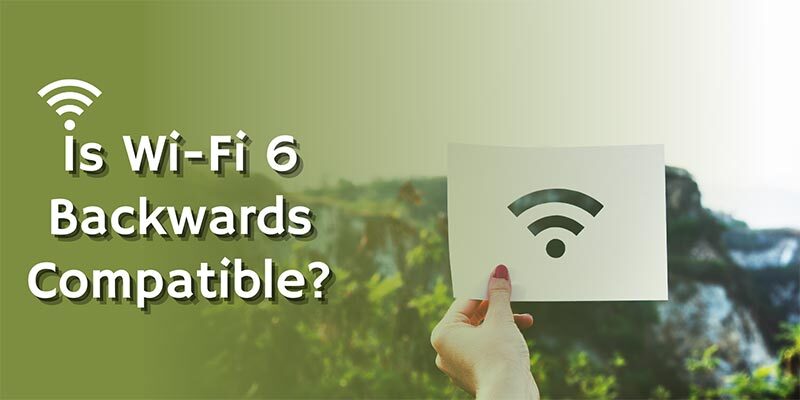Wi-Fi 6’s newest wireless standard, 802.11ax, is already available in consumer devices and is starting to be used in the workplace. Wi-Fi 6 says it will increase speed, make mobile devices’ batteries last longer, and make the network less crowded. WIFI 6 has become much more popular, but the question of whether or not your devices are compatible with the new standard still stands. Device compatibility can be one of the primary concerns for any user nowadays. Some users may be wondering is Wi-Fi 6 backwards compatible with older wireless standards now that it has been released. Okay, then, let’s find out.
What Is a Wi-Fi 6 Network?
Wi-Fi 6, the latest version of the popular wireless networking standard, is much better than Wi-Fi 5, which came before it. It is a certification for devices that use 802.11ax, which is the most recent wireless standard. Wi-Fi 6 is sometimes called “High-efficiency Wireless” because it improves things like speed, capacity, and efficiency. With traffic prioritization, OFDMA, and beamforming, Wi-Fi 6 has been able to increase its throughput. This new protocol is also safer because it uses modern encryption methods like SAE.
Smartphones and other devices with Wi-Fi 6 have been on the market since late 2018 or early 2019. But you can’t use this feature unless you have a wireless network that works with it. You can’t make a Wi-Fi 6 network without a wireless access point that has been certified for Wi-Fi 6 and supports 802.11ax. This is usually a router. On a network that doesn’t support Wi-Fi 6, a client’s support for Wi-Fi 6 has no effect on how well it works or how well it performs.
Is Wi-Fi 6 Backwards Compatible?

Yes, Wi-Fi 6 works with all versions of Wi-Fi technology that came before it. Once your Wi-Fi router or access point has been updated to support the new standard, it’s easy to upgrade your home’s Wi-Fi equipment from Wi-Fi 5 to Wi-Fi 6 without needing to reconfigure your network or reconnect any more of your devices.
The Wi-Fi Alliance says that almost all wireless routers but also access points made for consumers can work with Wi-Fi 6 networks. But not all routers and other devices may be able to use the standard. You won’t be able to take advantage of Wi-Fi 6’s faster speeds as well as longer range if you belong to one of these groups.
What Devices are Compatible with Wi-Fi 6?
The first devices that work with Wi-Fi 6 are expected to come out sometime in the first half of 2019. This group includes systems like routers, cell phones, and cloud computing. Since Wi-Fi 6 is compatible with 802.11ac, most mobile devices will be able to use its faster transfer rates and longer range.
Also, keep in mind that not all devices will be able to use the new standard. Not every device will be able to switch to the new standard, and those that do may have trouble keeping up with the faster speeds. WiFi 6 is 40% quicker than WiFi 5 if you only have one device to connect. When used with a WiFi 6 network, newer laptops with Intel’s Gig+ technology can quickly quadruple speeds.
Learn More: 5 Effective Ways to Bypass Hotel Wifi Throttling Issue
The Problem with Backward Compatibility
If you bring an 802.11b device to one of my places, you won’t be able to connect to wireless LAN (WLAN). What’s the point? After all, my 802.11ac wireless access points make sure that older clients can still use them. But in real life, the specs aren’t the last word, and 802.11ax is no different.
Backward compatibility sounds good in theory, but it could hurt performance by slowing down the network and keeping it from reaching the speeds that standards like 802.11ac and 802.11ax promise. The technical explanation is in the optional data rates. Even though it sounds good in theory, backward compatibility often hurts performance in practice. Some older client devices will only work when the WLAN speed is set to 1 Mbps or 2 Mbps. Experts in wireless networking often run large Wi-Fi networks.
For years, they have turned off lower rates on an administrative level. Don’t forget that using older standards like 802.11b could slow things down a lot and keep you from getting all the benefits of the latest Wi-Fi 6 standard. Is it true that older devices can connect to Wi-Fi 6? It depends. Just like what the definition of a norm says. Most networks will be set up in a way that doesn’t allow for 100% backward compatibility. This is done to improve performance.
Most of the time, the 1, 2, 5.5, and 11 Mbps 802.11b speeds are blocked, but there are some exceptions. In some places, you can’t even use any 802.11g speeds. Newer client devices will support at least 802.11n. However, some poorly made devices rely on cheap wireless chipsets or backward compatibility, which can cause problems for both the person using the device and the person in charge of the network.
Final Words
When you are reading is Wi-Fi 6 backwards compatible, some compatibility issues will come up more, but that’s normal for any new technology in its early stages. In this post, we talked about how to get around these problems that can happen when setting up a new Wi-Fi 6 router. If you can afford it, now is the time to switch to one of these devices because they have better networking features than Wi-Fi 5. But after reading this article, you know what to expect from Wi-Fi 6 and can decide if now is a good time to invest in it.



